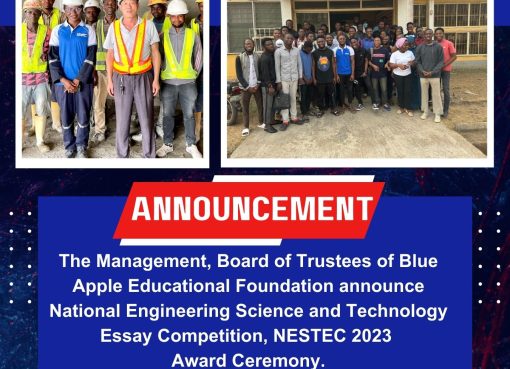To land a job working in the metaverse, you’ll need to have the right experience or knowledge – and engineers are certainly more than qualified.
This synthetic world was a proof-of-concept project created for engineering clients by Capgemini – but went way beyond expectations, says Mike Dwyer, director of digital engineering at the technology consultancy. This is the metaverse – not as you know it in the gaming worlds of ‘Fortnite’ or shopping at Walmart – but a place for engineers and technologists to work together in real-time, with facts and figures at their virtual fingertips.
“Ken and Steve stroll through the same digital universe, walk into the control area, look at the operational parameters,” says Dwyer. “The real change is that it all comes through automatically without teams of illustrators in the background.” Engineers trialling the technology liked it so much, they chose to have their morning meetings there.
Even though the metaverse isn’t quite upon us, it could upend the working life of engineers, scientists, and technologists. With seamless virtual collaboration and simulations, complex projects could be managed more fluently, productivity would soar, and costs would fall as the need for physical prototypes dwindles.
Virtual factories, digital twins and simulations have been deployed by manufacturers for some time. Swiss roboticists at ETH Zurich have already shown how virtual robot simulations can be used to create an algorithm to train and control real-world robots. German car maker BMW is experimenting with an entire virtual factory to perfect production and make processes more efficient.
Just as fashion houses test their designs in a digital world first, so too could engineering companies. “It could be almost like a customer clinic used to gauge what the customer wants before physically making a product,” suggests Alex Stern, senior industry strategy manager automotive at Autodesk.
And could epic engineering failures become a thing of the past once it becomes easier to run through ‘what-if?’ scenarios in an immersive rather than a 2D world?
That’s the optimistic view. But the challenge to achieve this professional utopia is immense. The metaverse as envisaged by Mark Zuckerberg doesn’t exist yet. A virtual working environment in these sectors requires tight security, bandwidth to transmit and manage vast amounts of data, computing muscle and compatible software – and the hardware to gain access. Simulating physical properties such as gravity is a challenge.
But more importantly, it will require a sea-change in human behaviour and a compelling reason to dive in – for anyone beyond their 20s, it all sounds a little sci-fi. And as some point out, what’s the point of simply replicating real-life work in virtual reality (VR)?
But as we’ve discovered since the pandemic, video calls can be draining, hybrid working leaves some staff feeling out of the loop, and industrial sectors are desperate to automate and improve productivity.
At the same time, costs of VR and mixed reality are falling. The likes of Meta and Microsoft are vying to usher in tools for an immersive professional world. Google is having another go at building a new augmented-reality device. In January this year, US chip maker Nvidia expanded its 3D open platform Omniverse – where creators can collaborate in real time in a shared virtual space. Omniverse deploys universal scene description (USD) – which Nvidia describes as the “common plumbing” or the HTML equivalent for the 3D world.
But amid the hype, we lack an understanding of how technology will blend with our everyday working lives, says Daniela Paredes, co-founder of Gravity Sketch – a virtual studio tool where individuals can collaborate and create. “The ‘metaverse’ started a long time ago when we all started to connect over the internet,” she says. “The important part is how we now take digital interaction away from 2D screens, keyboard and mouse.” Just as we now dip in and out of online sites via our mobiles, we can do the same in VR – it will ultimately be a better experience.
And don’t confuse VR for the metaverse, says Duncan Roberts at technology consultants Cognizant’s Center for the Future of Work. “XR [extended reality] and VR are a way to inhabit the metaverse in a better way than you can do on a flat screen.” How people use it professionally will dictate how and where it’s hosted – be it on networked PCs or streamed via headsets. Not every scenario will require an immersive environment.
Enthusiastic adopters say VR is a more intuitive way of working – hands free, and without the need for multiple physical screens – everything is literally there in front of your eyes, and human interaction is more natural. And engineers are already used to working in digital spaces. Particularly in aerospace and automotive sectors, they rely on computational modelling and simulation to give insights into how products and systems perform in context. The entire development of a car, a machine, a process, can become less linear, more collaborative, and potentially faster, without the need for so many physical prototypes, says Stern. With this level of collaboration, a finished product could be better.
Nonetheless, restrictions imposed by the pandemic and pressure to travel less have seen demand rise for immersive design tools – and engineers at Adidas, Ford and Volkswagen have used Gravity Sketch to design. “I’ve heard of colleagues who say they’ve got to know each other well through working together every day though they’ve never met in person,” says Paredes. Designers have “tiptoed” inside trainers they’re co-creating to inspect stitching – you can shrink to the size of a Lilliputian in the virtual world – and experimented with different styles and materials before sending designs for prototyping, eliminating several production stages and physical journeys, says Paredes.
Immersive environments have long been used by engineering companies to boost product development, and it’s 30 years since the first CAVE (Cave automatic virtual environment) was invented at a US university. Essentially a space with projections, a CAVE – used in car design – allows a 3D immersive experience. While VR – billed as the next big thing for at least the last ten years – has yet to live up to its hype, it lends itself to training scenarios and to design.
And the virtual world is a useful way to see products in context, says Steve Ghee, chief technical officer for augmented reality (AR) and VR at software and services company PTC, who has worked with VR for some 30 years. “That’s where I see the metaverse being used in our industry – VR and AR give you ‘superpowers’ where you can do and see stuff that you can’t do physically – or go to the Moon, the bottom of the sea.”
It’s the automotive sector that is driving adoption of virtual design tools, says Stern: “The metaverse is fully fledged in car design… virtual digital content has become richer and richer.” Car makers work on a proprietary rather than open platform. “But it’s more advanced already than Zuckerberg showed… his presentation still looked cartoonish and immature. What these companies are doing is pretty professional.”
From engineering to gaming to product design, robotics, autonomous vehicles and more, “3D has become as essential as the worldwide web for all these different types of industrial use cases”.
Many other sectors could benefit from a collaborative immersive platform, says Stern – not least architecture and construction, which are less digitised and more fragmented than aerospace and automotive. “Perhaps the metaverse or this sort of virtual collaboration could be the killer app that leads to mass adoption of digital technology.”
Software packages don’t typically work well together, say industry specialists. Connecting incompatible engineering tools and automating processes is a challenge to be solved before engineers can fully function in the metaverse. Today’s products are complex, involve many different partners and require input at different stages.
“One of the big challenges to solve for a metaverse for engineers is to connect the data and make it more fluid,” says Stern. “Lots of companies use different tools and everything you see has a lot of data behind it. Being able to manipulate that, see how it interacts… is going to be a game changer. Once that happens it’s going to make engineering more accessible and collaborative.”
There are obvious security worries – car makers and other industrial users will want to protect their intellectual property and keep industrial secrets – and they still can, says Stern. “But there can be closed or proprietary engineering metaverses that don’t have to be open to the entire ecosystem.”
Virtual
Digital simulations and virtual twins could eventually be a game-changer for life sciences and the medical technology sector, which still relies heavily on expensive and hard-to-access clinical trials. There is, as Frederic Vacher at Dassault Systèmes notes, as yet no virtual twin of the human body. But scientists and medics are already using the virtual world to prepare for complex medical procedures and to help design bespoke personalised implants and prostheses, says Vacher.
An accelerator platform created by Dassault Systèmes – the 3DEXPERIENCE Lab, where Vacher is head of innovation – aims to encourage start-ups working with virtual technologies. One India-based MedTech company on the platform – Lucid Implants – proposes to help surgeons by creating custom-made facial implants. Currently, surgeons use an ‘off-the-shelf’ implant or a bone graft – with mixed results. By helping surgeons plan for surgery using 3D simulation and by aiding 3D printing of facial implants, the company hopes for better medical and aesthetic results from facial reconstruction surgery.
A French start-up also on the platform proposes using advanced software and 3D printing to create lifelike organs – with properties close to the real thing. By recreating a digital twin of the faulty organ – down to exact thickness and texture – Biomodex wants to help doctors learn what to expect and to perfect technique ahead of live surgery. Medical students could also train on 3D clones of organs. “In the virtual world you can make mistakes and learn,” says Vacher. “So, in the real world the impact is huge.”
And even tech-savvy engineers and scientists are naturally resistant to change, says Ghee, and happy working with CAD on flat screens. Individuals, he reminds us, spend a fortune not to wear glasses – “so now we’ve got to persuade them to wear headsets? But if we can make it easy to step in and back out into reality, people will be more comfortable… you need to find a compelling reason to force people out of their comfort zone.”
If you can overcome the fear factor, not to mention the investment, working life could become more engaging.
“A few years ago,” remembers Dwyer, “I had a client who said, ‘can’t you make all this [2D CAD] stuff more like ‘Minecraft’?’ It’s an immersive and compelling environment, people love being in it.”
As products become more complex, and commercial pressures mount, it makes sense, says Dwyer to exploit new ways of working to speed up. Many see the metaverse as inevitable, perhaps up to a decade away but a natural evolution from digitisation, which has been accelerated by the pandemic. “It’s going to be a game-changer,” says Stern. For companies, a more collaborative virtual world could allow them to hire staff anywhere, regardless of location, and overcome local skills shortages. Small companies may be nimbler and swifter to adopt new technology, though they need to work on digitising their processes and ensuring these converge.
Performance is increasing and costs are dropping, and observers anticipate reaching a tipping point within the next decade or so. But you can’t automate everything, warns Dwyer. “The brilliance of a company, the brains of a brand, is delivered by its people. Investment in the metaverse requires a two-pronged approach – championed by leadership but ultimately driven by the users who will find different things to do with it.”
Source: E&T










